Showing Spotlights 577 - 584 of 2779 in category All (newest first):
 Researchers propose a highly integrated system of an 'air charging' zinc-ion capacitor/battery. By scavenging energy from pervasive air, a zinc-ion capacitor/battery can be conveniently and easily charged without applying an additional power source. The system possesses a simply structure that consists of a flexible bifunctional U-shaped electrode (with the dual function of energy harvesting and storage), a zinc-metal electrode in middle, and two different polyelectrolytes (PAM and PANa) sandwiched between the metal zinc and the electrode.
Researchers propose a highly integrated system of an 'air charging' zinc-ion capacitor/battery. By scavenging energy from pervasive air, a zinc-ion capacitor/battery can be conveniently and easily charged without applying an additional power source. The system possesses a simply structure that consists of a flexible bifunctional U-shaped electrode (with the dual function of energy harvesting and storage), a zinc-metal electrode in middle, and two different polyelectrolytes (PAM and PANa) sandwiched between the metal zinc and the electrode.
Apr 5th, 2019
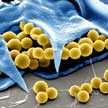 New work on self-propelled biohybrid microrobots has been inspired by recent developments of biohybrid cyborgs that integrate self-propelling bacteria with functionalized synthetic nanostructures to transport materials. Taking inspiration from the science fiction concept of a cybernetic organism, or cyborg, researchers developed a self-propelled biohybrid microrobot, named rotibot, employing the marine microorganism rotifer as their engine.
New work on self-propelled biohybrid microrobots has been inspired by recent developments of biohybrid cyborgs that integrate self-propelling bacteria with functionalized synthetic nanostructures to transport materials. Taking inspiration from the science fiction concept of a cybernetic organism, or cyborg, researchers developed a self-propelled biohybrid microrobot, named rotibot, employing the marine microorganism rotifer as their engine.
Apr 3rd, 2019
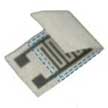 Recently, a brand-new mechanism of pressure sensing, known as flexible iontronic sensing (FITS), has been introduced, which utilizes pressure-induced capacitive changes between electrodes and ionic surfaces. Researchers have used FITS to develop a single-sheet iontronic paper substrate with both ionic and conductive patterns as an all-in-one flexible sensing platform. This novel paper sensor extends the iontronic sensing principle to a more adaptive material system, with direct printability, custom cuttability, and 3D foldability at a low cost - just as regular paper.
Recently, a brand-new mechanism of pressure sensing, known as flexible iontronic sensing (FITS), has been introduced, which utilizes pressure-induced capacitive changes between electrodes and ionic surfaces. Researchers have used FITS to develop a single-sheet iontronic paper substrate with both ionic and conductive patterns as an all-in-one flexible sensing platform. This novel paper sensor extends the iontronic sensing principle to a more adaptive material system, with direct printability, custom cuttability, and 3D foldability at a low cost - just as regular paper.
Mar 27th, 2019
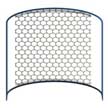 An international team of researchers has demonstrated a simple method for transferring A4-size sheets of CVD graphene from copper foils onto a target substrate using a commercially available polyvinyl alcohol (PVA) polymer foil as a carrier substrate and an off-the-shelf office laminator. This do-it-yourself approach requires few tools and low cost materials - it is safe and easy enough to be carried out in school physics classes. There are no chemicals involved besides water; no spinner; no dangerous etchants.
An international team of researchers has demonstrated a simple method for transferring A4-size sheets of CVD graphene from copper foils onto a target substrate using a commercially available polyvinyl alcohol (PVA) polymer foil as a carrier substrate and an off-the-shelf office laminator. This do-it-yourself approach requires few tools and low cost materials - it is safe and easy enough to be carried out in school physics classes. There are no chemicals involved besides water; no spinner; no dangerous etchants.
Mar 25th, 2019
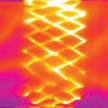 Smart watches, fitness trackers, smart garments, smart medical attachments, data gloves - the market for wearable electronics is quickly evolving beyond health care, fitness and wellness into infotainment, and commercial and industrial applications. A review investigates the contribution of nanomaterials in the field of wearables with a focus on actuators and sensors. It discusses current applications of nanomaterials in this field and touch upon the different materials and methods being used.
Smart watches, fitness trackers, smart garments, smart medical attachments, data gloves - the market for wearable electronics is quickly evolving beyond health care, fitness and wellness into infotainment, and commercial and industrial applications. A review investigates the contribution of nanomaterials in the field of wearables with a focus on actuators and sensors. It discusses current applications of nanomaterials in this field and touch upon the different materials and methods being used.
Mar 22nd, 2019
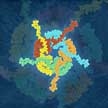 Alpha-synuclein is a protein whose function in the healthy brain is currently unknown. It is of great interest to Parkinson's researchers because it is a major constituent of Lewy bodies, protein clumps that are the pathological hallmark of Parkinson's disease (PD). Scientists believe that the self-assembly of alpha-synuclein into oligomers and fibrils is linked to progress and pathogenesis of the disease. A new study suggest that important characteristics of the fibrillation process, such as surface charge and surface functional group, should be considered in the development of nanotechnology-based therapeutic approaches.
Alpha-synuclein is a protein whose function in the healthy brain is currently unknown. It is of great interest to Parkinson's researchers because it is a major constituent of Lewy bodies, protein clumps that are the pathological hallmark of Parkinson's disease (PD). Scientists believe that the self-assembly of alpha-synuclein into oligomers and fibrils is linked to progress and pathogenesis of the disease. A new study suggest that important characteristics of the fibrillation process, such as surface charge and surface functional group, should be considered in the development of nanotechnology-based therapeutic approaches.
Mar 19th, 2019
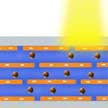 Recent research in nanofluidics has adopted reconstructed layered two-dimensional (2D) sheets as a promising material platform for nanofluidics. These membranes contain a high volume fraction of interconnected 2D nanochannels. In new work, researchers demonstrate a coupled photon-electron-ion transport phenomenon through graphene oxide membranes. It shows a straightforward way on how to power the transport in 2D layered materials using the energy of light.
Recent research in nanofluidics has adopted reconstructed layered two-dimensional (2D) sheets as a promising material platform for nanofluidics. These membranes contain a high volume fraction of interconnected 2D nanochannels. In new work, researchers demonstrate a coupled photon-electron-ion transport phenomenon through graphene oxide membranes. It shows a straightforward way on how to power the transport in 2D layered materials using the energy of light.
Mar 18th, 2019
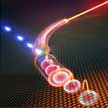 In recent years, all-optical modulators (AOMs) have attracted significant interests due to their low power consumption, broad bandwidth, and potential in all-optical fields. Among these, AOMs based on the high photothermal efficiency of antimonene, exhibit remarkable advantages for their large modulation depth, wide operating wavelength range, and easy implementation.
Researchers demonstrated that an antimonene-based AOM was successfully utilized to actively Q-switch a fiber laser in a fully photonics domain and this actively modulated laser represented all-optically tunable output parameters, and easy time synchronization.
In recent years, all-optical modulators (AOMs) have attracted significant interests due to their low power consumption, broad bandwidth, and potential in all-optical fields. Among these, AOMs based on the high photothermal efficiency of antimonene, exhibit remarkable advantages for their large modulation depth, wide operating wavelength range, and easy implementation.
Researchers demonstrated that an antimonene-based AOM was successfully utilized to actively Q-switch a fiber laser in a fully photonics domain and this actively modulated laser represented all-optically tunable output parameters, and easy time synchronization.
Mar 15th, 2019
 Researchers propose a highly integrated system of an 'air charging' zinc-ion capacitor/battery. By scavenging energy from pervasive air, a zinc-ion capacitor/battery can be conveniently and easily charged without applying an additional power source. The system possesses a simply structure that consists of a flexible bifunctional U-shaped electrode (with the dual function of energy harvesting and storage), a zinc-metal electrode in middle, and two different polyelectrolytes (PAM and PANa) sandwiched between the metal zinc and the electrode.
Researchers propose a highly integrated system of an 'air charging' zinc-ion capacitor/battery. By scavenging energy from pervasive air, a zinc-ion capacitor/battery can be conveniently and easily charged without applying an additional power source. The system possesses a simply structure that consists of a flexible bifunctional U-shaped electrode (with the dual function of energy harvesting and storage), a zinc-metal electrode in middle, and two different polyelectrolytes (PAM and PANa) sandwiched between the metal zinc and the electrode.
 Subscribe to our Nanotechnology Spotlight feed
Subscribe to our Nanotechnology Spotlight feed





